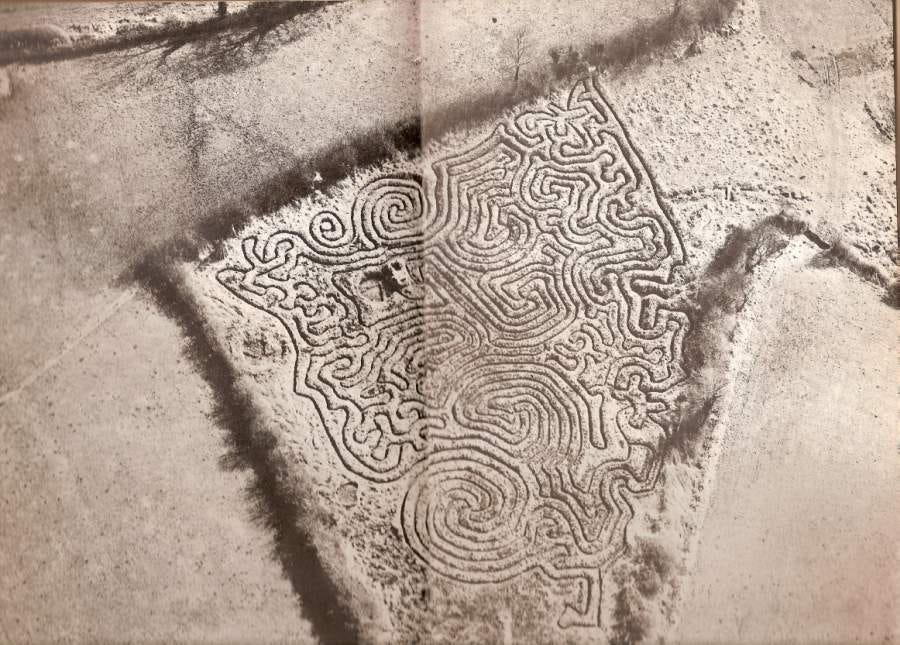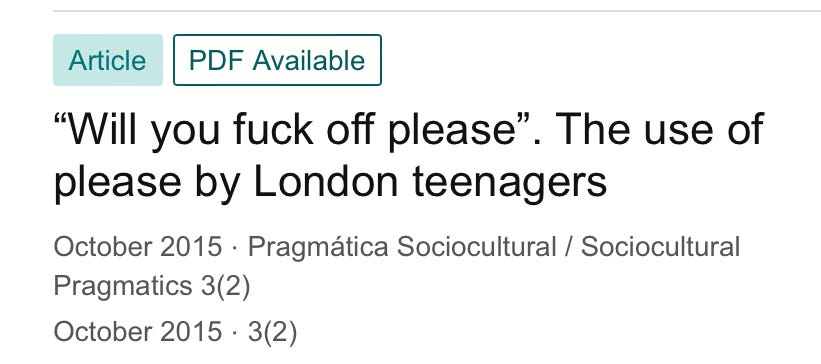Thing 1 – Mazes
For about five years, perhaps between the ages of ten and fifteen, I was obsessed with mazes. If I wasn’t trying to solve them, I was drawing my own. I’ve just spent ten minutes channelling my inner twelve-year-old to produce this, which is pretty typical of the kind of thing I used to do.
There are far worse ways to spend your time than creating this kind of purposeful doodle. Taking a line for a walk combined with low-grade problem solving.
In the same way that I can’t remember the origin of my childhood passion for birds, it’s not clear to me when maze-drawing became part of my daily routine. I do remember being absorbed by them, whether setting or solving. Some were facile, with multiple or obvious routes to the ultimate goal, whether that was the centre or a second exit. Others, the ones I liked (up to a point), were bewilderingly complex.
Strange how memory works. I don’t think I’ve actively thought about mazes in over forty years. And yet here it all comes, in a Proustian rush – the sharpened pencil or fine fibre-tip, the clean piece of A4 or spiral-bound notebook, the concentration, the satisfaction of seeing the maze take shape, making it simple at first, then blocking off dead end after dead end until it was complete, all the while knowing that when it’s finished it will contain a secret – that one path – that only you know about.
This was the 1970s, of course – and if you feel the words ‘we had to make our own entertainment back then’ marching with ill-advised and tedious confidence towards this paragraph, you might be right. The 1970s might not actually have been boring, but they sure felt like it at times. How regularly I interrupted my mother – who nowadays would be described, much to her disgust, as a ‘mumpreneur’ – with the plaintive whine: ‘I’m booooooorrrreeedd’. Her response was pretty much the same every time. Succinct and to the point: ‘write a book, stand on your head’. In other words, ‘fuck off, I’m working’. Fair enough.
It was many years before I fulfilled the first part of the brief, and I still can’t stand on my head. Instead, I drew mazes.
The doyen of maze-making was a man called Greg Bright, who seemed to me impossibly strange and brilliant. He drew fantastically elaborate and beautiful mazes – I remember one, a seething mass of spiralling lines filling the page, about which Bright wrote ‘I do not expect you to do this one. NB: it has no dead ends.’ Round and round it I went, never (as far as I remember) finding my way to the middle. It’s the journey, not the arrival.
(Incidentally, I love that while in many languages the word for ‘maze’ is a version of ‘labyrinth’, German calls it ‘mistake garden’ (‘irrgarten’).
There’s stiff competition for the title of ‘Greg Bright’s Most Ridiculous Maze’. It might be the astonishing Hole Maze Book (the concept is fairly self-explanatory, the reality quite mind-bending). Then there was the Colour Maze, a psychedelic adventure that seemed, even to this maze-niac, a bit too much of a palaver.
But really the crown belongs to the Pilton maze, dug by the 19-year-old Bright in a field near Glastonbury. He asked Michael Eavis if he could have an acre or two to make a maze, and lived there for the next year. As you do. Almost completely by himself (a few helpers came for the first couple of weeks, but understandably drifted away), he dug a mile of trenches between eighteen inches and six feet deep.
As I say, it was the 1970s – you could do stuff like that back then.
A few years later he designed and built the hedge maze at Longleat, which remains the largest in Britain.
Possibly as a direct result of his Pilton maze experience, the introduction to Greg Bright’s Maze Book: Puzzles For Everyone contains the following: ‘Now, and for some time, I have ceased even to like mazes. I dislike them.’ Later, as this excellent article reports, he went further: [the mystery of mazes] ‘particularly disgusts me’.
The article also contains a fine piece of musical insight: ‘What, for me, Bach does, is make the law sound like freedom.’
Damn right.
On which subject, and parenthetically, here is Bach’s Crab canon, from The Musical Offering, rendered as a Möbius strip
Greg Bright’s books are all out of print, although they pop up on AbeBooks here and there.
But Henry Eliot’s Follow This Thread is very much in print, and worth exploring.
Finally, if this has given you the urge to try out a maze or two, there are some nice ones here. Greg Bright would, I feel sure, pooh-pooh them as facile and simplistic.
Thing 2 – Instruments
Two fascinating films about making musical instruments.
Here’s the last piano factory in the UK:
And here are Zildjian cymbals:
Thing 3 – Cartoons
This is lovely. A short analysis of the genius of Chuck Jones.
‘All humour comes from human behaviour and logic’
Thing 4 – Please
Scientific research with a sense of humour is always fun. There’s this paper, showing that ‘parachute use did not reduce death or major traumatic injury when jumping from aircraft’; or this one, the best scientific paper ever written.
‘Will you fuck off please’ isn’t quite up there with those excellent efforts, but it’s enjoyable and interesting nevertheless.
Thing 5 – Today
Here’s a simple thing showing how simply massive time is – a temporal Total Perspective Vortex, if you like.
Thing 6 – Second
Talking of time, how long is a second? Do you know? WELL DO YOU?









...and thanks to Chuck Jones I found the perfect mascot to accompany me through my constant state of planning and falling and planning and falling during the 42 years I spent undiagnosed as neurodivergent. Wile E Coyote.
Another brilliant 6 things. PS: My partner helped dig the Pilton Maze!